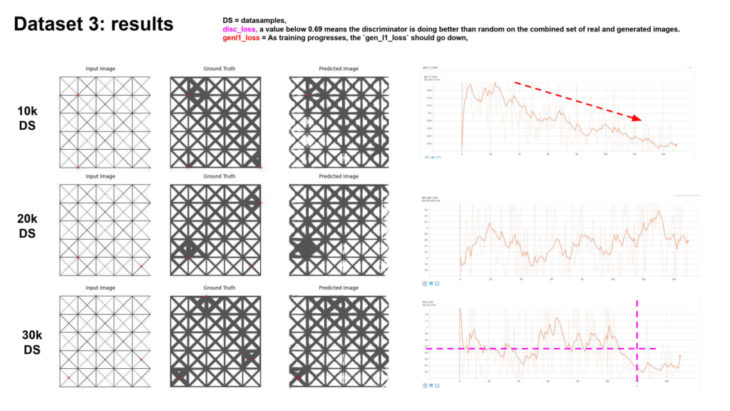GANstruction
abstract
buildings and construction industry accounts for around 40% of all climate-damaging emissions. one third of them are related to material production, transportation and construction. the technological impact in construction is still developing on a slow pace compared to other fields. walls and ceilings are still built like 200 years ago, therefore using technology to create handy solutions to be used on the simplest of building sites was our highest priority.
GANstruction is a proof of concept to use machine learnig to generate structurally optimized triangulated ribb ceilings. it provides a simple solution between a slab tailored to structural behavior and prefabricated waffle slab. from this point on the triangulation pattern can reduced to 3-4 different triangle types, on the one hand to augment the structural behaviour of stress lines better and on the other hand to easily manufacture it on site for insitu casted ceilings.
problem statement
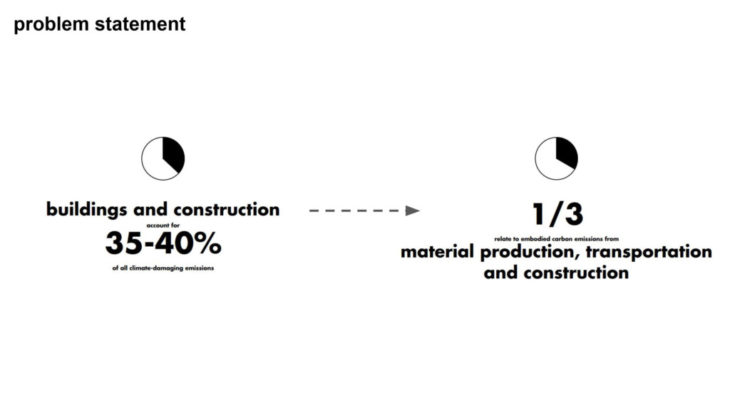
concept / design space
reducing material for structurally tailored ceilings. By creating generalized pattern rather than imitating stress line between supports. In other words, what can we create between a slab tailored to structural behavior and prefabricated waffle slab?? our solution is GANstruction
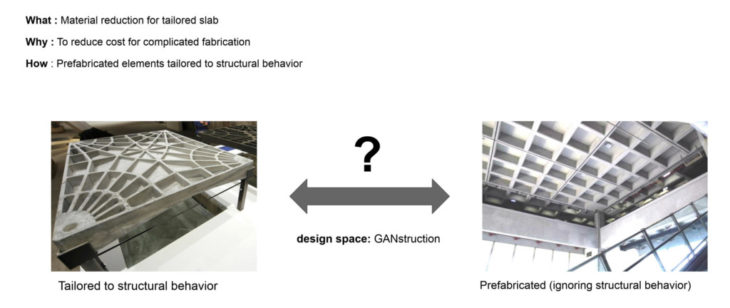
setup
We created dataset 1 by changing position of support points randomly on-grid. Size of the ceiling is 5 by 5 m with 3 supports. We remapped patterns depends on bending moment. 2000 images were saved as 256 by 256 pixels.
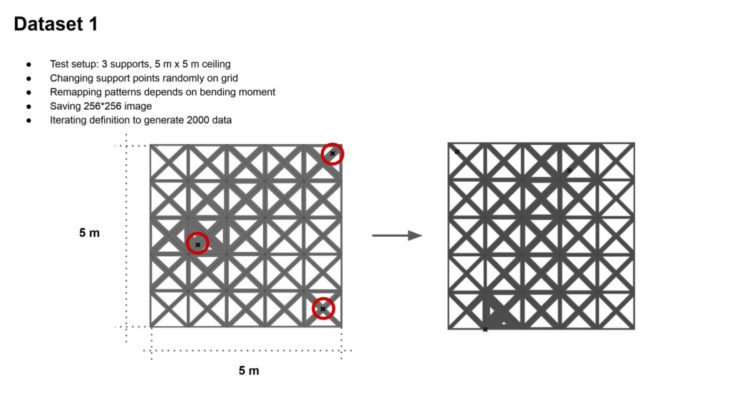
model 1 – 2d DC GAN
In the first trial, we used DC GAN for low resolution images. Our discriminator had 600 thousand params while generator had 3 million params. We tried a lot with changing hyper parameters, tho most of time, the results showed us mode collapse with 100% accuracy in early epochs.
In the second trial, we used DC GAN for higher resolution images. In this case we used more deep network than first trial with 920 thousand params for discriminator and 18 million params for generator. We trained models until 30 thousand epoch.
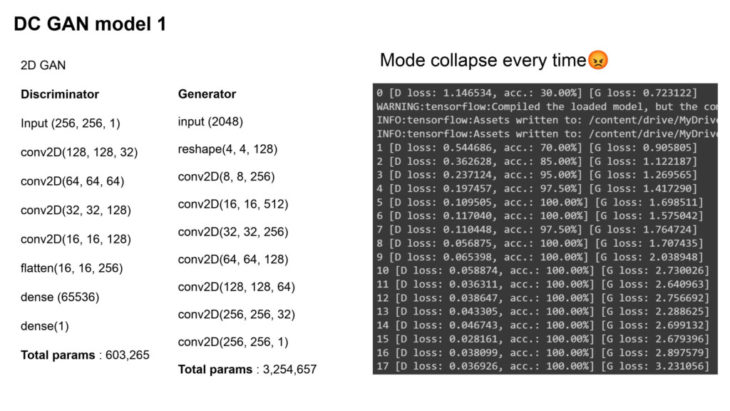
model 2 – 2d DC GAN
These are the results. Epochs are shown above each images. As you can see, It seems model learned gradually since beginning to 15000 epoch, while it lost direction in 20000 epoch and repeat learn and lost until the end of 30000 epoch. We changed our direction from DC GAN to a 2d C GAN model called PIX2PIX.
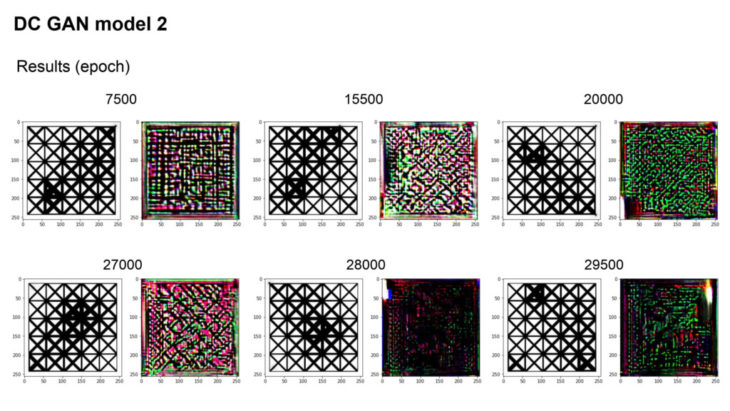
model 3 – “final” – 2d C GAN – PIX2PIX
-
dataset2
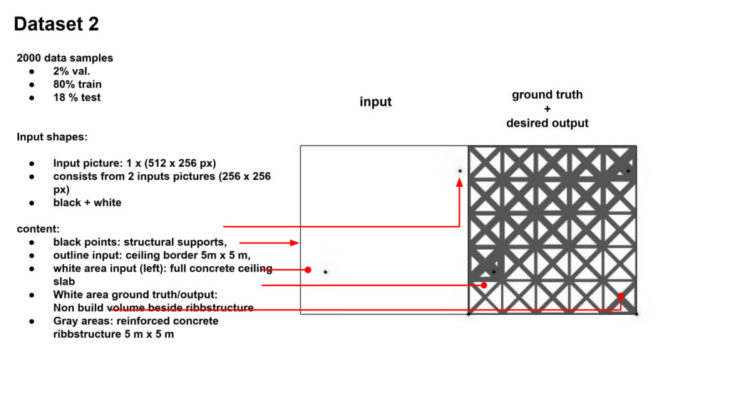
-
TEST 1 – dataset2
the first test of dataset 2 with pix2pix gave already promising results. after 1.000 epochs the gan was already able to learn and generate the desired patterns from 3 supports. however, after 30.000 epochs the learning seemed to have reached its peak, therefore we wanted to increase the predictability by adding the structural grid in dataset 3.
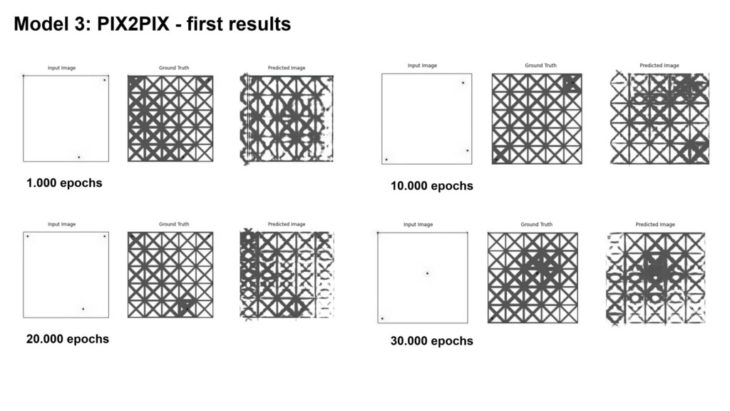
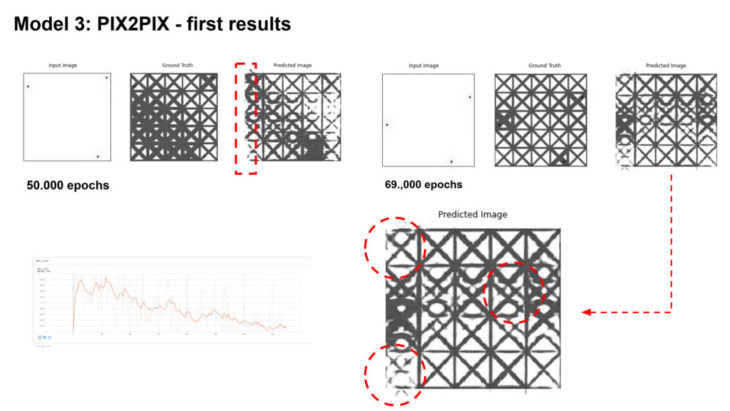
-
dataset3
the performance of dataset 3 increased tremendously, due to adding the gridstructure to the input + aligning the supports with the center points. after 10.000 epochs the modell already was capable of generating meaningfull results. so we took one step back, enabling the supports to jump more randomly on the grid lines in dataset 4.
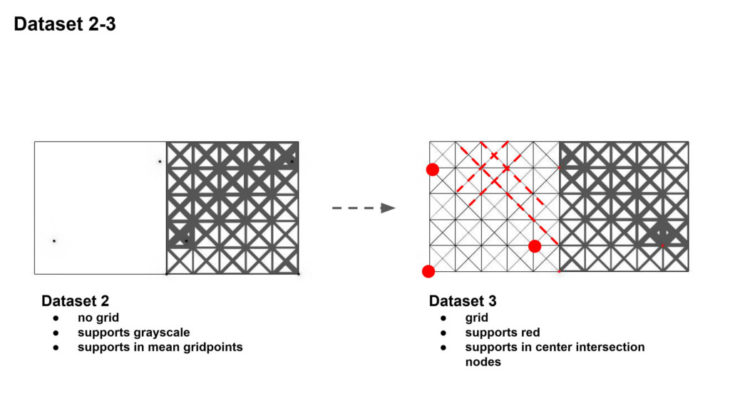
-
TEST 2 – dataset3
-
TEST 3 – dataset4
the learning in dataset 4 seemed to increase again, du to the “irregularity” of the stressline patterns comming from the randomization of supports. still the gan clearly had an issue with learning the boundary areas of the ceiling + the supports as well. therefore we added a white offset frame surrounding the ceilings in dataset 5.
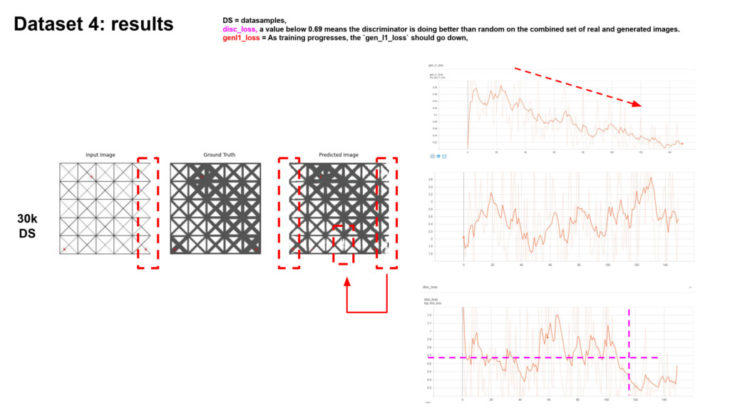
-
dataset 4 – 5
offsetting a white frame around the ceilings for the input and the desired output and groundtruth, increased the learning tremendously. (please refer to final test + results)
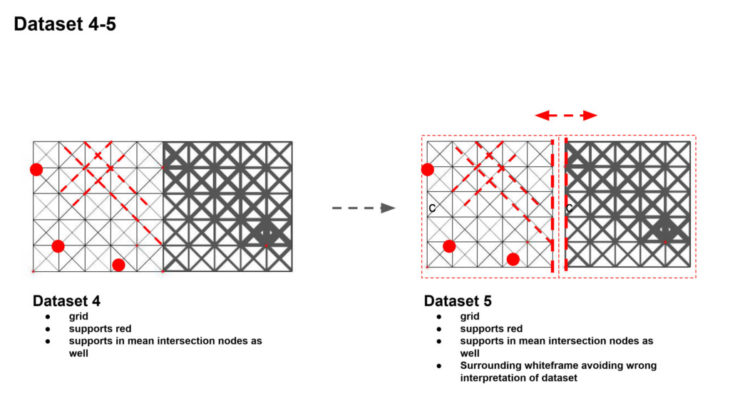
FINAL TEST + RESULT – dataset 4 – 5
the final tests + result were astonishing for us. after 1.000 epochs already the quality of prediction exceed all results from before. after 30.000 epochs its almost not possible to tell the difference between the generated prediction and the ground truth. therefore we understand our experiment to be successfull and want to take it further from this point on in research.
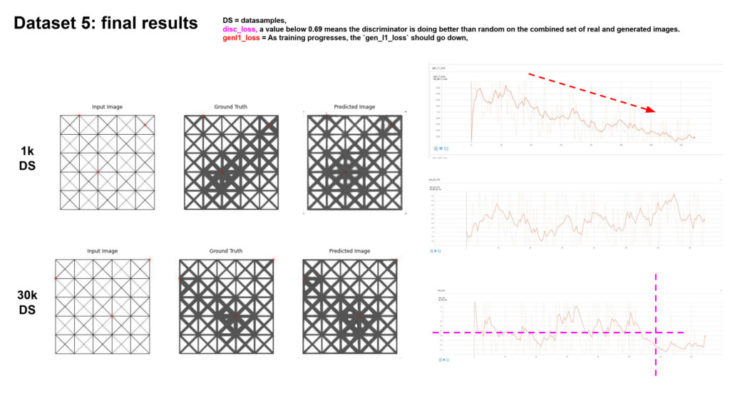
GANstruction is a project of IAAC, Institute for Advanced Architecture of Catalonia developed at MaCAD (Masters in Advanced Computation for Architecture & Design) in 2022 by Students: Takeaki Sakakibara + Clemens Russ and faculty: Oana Taut and assistant faculty: Aleksander Mastalski.

